Richard Barbieri is the synthesizer technician who first found fame as a member of JAPAN.
Along with Catford Boys School pals David Sylvian, Mick Karn and Steve Jansen plus Hackney born guitarist Rob Dean, the quintet found fame in the country of Japan itself with their unusual hybrid glam funk rock. As an untrained keyboardist, Barbieri didn’t come into his own until he immersed himself into the brave new world of synths. His interest coincided with JAPAN’s change of direction into the more mannered, artful style as showcased on their third album ‘Quiet Life’ released in late 1979. However, the band were dropped by their label Ariola Hansa, but they had revealed their true potential and were quickly snapped up by Virgin Records.
As Barbieri grew more confident with his aural sculpting, JAPAN headed towards a more electronic sound with their final two albums ‘Gentlemen Take Polaroids’ and ‘Tin Drum’
. Despite their success and a run of 6 successive Top 40 singles in 1982, all was not well within the camp. Although JAPAN split, Barbieri stayed on good terms with all of his bandmates, working with them on their solo ventures and in various combinations under the monikers of THE DOLPHIN BROTHERS, RAIN TREE CROW and JBK. In more recent years, Barbieri has been a member of prog rockers PORCUPINE TREE but with the band currently in hiatus, the veteran sound designer is about to unleash a brand new solo album entitled ‘Planets + Persona’
.
Richard Barbieri kindly took time out to chat about his upcoming opus and career, as well as expressing some frank views about Spotify and the current generation’s attitude to music consumption…
You’re releasing your third solo album ‘Planets + Persona’, how would you describe it?
It’s probably the most expansive sounding album I’ve made. Sonically, I’ve used a lot performers and acoustic instruments to mix with the electronics. With previous albums, I tended to work at home with a laptop and software, but the more you work alone, the more it seems to have just one sound. ‘Planets + Persona’ is more cinematic, it’s a wide spectrum of sounds so if I was a painter, you could say I’m using more colours.
You’ve been with PORCUPINE TREE for many years now, why did you feel the time was right for another solo work?
It’s been quite a while! I’m not that prolific, a solo album seems to come out every 6 or 7 years! *laughs*
I never really know when I’m going to do one, it’s just when the time feels right. If I tried to write and record all the time, I think the quality would suffer so I know inside when it’s right. I felt quite inspired and things moved along pretty quickly really. So I decided to put more money into this and travel around to work with lots of different musicians and make it a real kind of experience as well.
Which do you feel are the pivotal tracks on ‘Planets + Persona’?
I’m happy with them all, but I would say my favourite is the first track ‘Solar Sea’, it encompasses everything I wanted to do with this album. There’s my obvious love of electronics and analogue synthesis, but it came from a weird rhythm that I constructed out of various samples and machines. I’d call it a sleazy rhythm, it feels good but there’s something slightly jarring in there and this set me off on this pattern. I worked everything around it using a lot of bass from the System 700 and wrote these jazzy chord progressions over the top which is quite unlike me, but I liked the atonal feel and I built that up with trumpets and saxophones.
Then it goes into sections where this musician I’m working with Lisen Rylander Löve does live vocals, but she’s manipulating the voice in real time, so it’s a vocal performance but she’s not actually using words, it’s vowels and noises with pitch shifting, warping and delaying. She has this table full of gadgets and uses what looks like an old Russian Army microphone for that lo-fi sound! When I worked with her a couple of years ago, I was so impressed that I wanted to work with her again.
‘New Found Land’ is like spacey avant jazz, how did that come together?
That’s the oldest track of all of them, I originally wrote it for PORCUPINE TREE, but as there was nothing happening with the group, I thought I would develop it myself. I would say it’s the most accessible track on the album, probably the most melodic and maybe what people would expect of me.
There’s a guy I work with, Steve Hogarth and I used his vocals from another project we’d been working on. I layered up these voices that had quite interesting close harmonies so I manipulated them, put them into a sampler and further synthesized it, so I ended up with a choir patch from his voices. That was the backdrop to the whole thing and I started to write these chord progressions. It’s a bit like 10CC ‘I’m Not In Love’ where you know it’s not a Mellotron or string machine or a choir or anything, you know it’s real voices but it sounds slightly weird.
You’ve hit on something there… there’s a deep choir sound that doubles with the ARP Solina on ‘Despair’ from the ‘Quiet Life’ album; how did you get that sound, was it a synth or a Mellotron?
There were Mellotrons at Air Studios where we did the album, and one was THE BEATLES’ Mellotron because it was Paul McCartney’s studio, he was there all the time and there was always their gear around. It could have been from that, but there was a choir setting on the Solina and that was really nice…
That solves a mystery then… Percy Jones plays on ‘Solar Storm’ from the new album and he was a key influence on all of you in JAPAN, particularly Mick Karn. What was it like to work with him?
It was brilliant, he’s a bit of a hero to me. We used to listen to that Brian Eno album ‘Another Green World’, the rhythm section of him and Phil Collins is just amazing. I’d never really heard bass played like that before, it was something different. With Eno’s synths and everything, it was such a great combination.
I’d always wanted to work with him but when you have him on a track, you have to accept he’s just going to go crazy and do his thing! He’s not the person to have if you want a particular arrangement but I knew there was space for him to be himself. I had a feeling it would work really nicely and there’s a middle section where there’s all these sequences going on. He’s soloing against them and I really liked that.
There is a wide instrumental palette on the album, but vintage analogue synthesizers are still your primary source of expression. Which particular ones have retained the most affection for you?
I’m using the ones I’ve always used… I haven’t got a vast collection, I’ve just hung onto the ones that have been the most useful to me and cover all bases. I’ve got the Roland System 700 semi-modular, and it’s the Laboratory Series so that’s the main console with three oscillators; you can patch as well so you can go either way.
I’ve been using that since 1978 and I bought that from Rod Argent’s Keyboards in Denmark Street, London. I use it a lot for effects, bass and spacey stuff. Then there’s the Prophet 5 which I’ve been using since the 80s, I’ve never found anything that sounds as lush, warm and beautiful. And there’s the Micromoog…
…was that your first synth?
Yes, I’m still using it! *laughs*
It’s incredible, it stays in tune, it’s wonderful. I find it’s more flexible than a Minimoog. Because of the routing, there’s a lot more to it than you think. You’re limited because you’ve really only got one oscillator, although you have a doubling effect where you can have an octave below or above. But there’s so many ways that you can route the modulations. Through the modulation, you’ve got sample and hold, oscillator and filter combined, noise and you can route these things all together.
Do you go with Eno’s notion that you are identified by the limitations of your instrument, but that then challenges you more to take the instrument further?
Yes, one of the big problems today is these massive libraries that you have with software synths, and it’s too much! You can get lost… when you’re in a creative mode, you just want to get these things down, you don’t want to search through 100 different versions of a bass synth because by the time you get to the 99th one, you’ve forgotten what you wanted to do in the first place! Even on JAPAN’s ‘Tin Drum’ album which was quite an adventure in programming, we more or less only used two synths, the Prophet 5 and the Oberheim OBX.
I noticed on your keyboard rack, you don’t appear to have the OBX anymore?
I don’t… I don’t know what’s happened to it! *laughs*
I lent it to Mick Karn who used it on his album… it’s funny to think but in those days, you didn’t feel so precious about this gear because it was just the technology of its time. Now, I would do anything to find out where it is! To get one now would cost me about £7000 – £8000 probably!
Jump forward to ‘Gentleman Take Polaroids’ and you’d purchased the Oberheim OBX and Prophet 5 while also using the Jupiter 4, ARP Omni and Polymoog. Bearing in mind how costly somewhere like Air Studios was, was there ever enough time to explore the synths that were hired in, as opposed to the ones that you owned?
Some was hired and some was just there. The studios used to be pretty well equipped in those days. It was weird that album, ‘Gentlemen Take Polaroids’ was where the set-up was in transition; on ‘Quiet Life’, I had a very basic set-up that I stayed with and afterwards on ‘Tin Drum’ as well.
But here, we were using whatever came to hand. I did get quite into the Polymoog which I never owned, but used and enjoyed a lot. Sometimes in my mind, I think I’ve played something when I haven’t, like I imagined there was a Yamaha CS80 there, but I don’t think there was!
You also had the Oberheim Mini-Sequencer, what was that like as it’s not as widely known as say, the ARP Sequencer?
It was what I was recommended when I got the System 700, because I wasn’t getting the giant version with the Roland sequencers. It was pretty hard getting the right bits of gear to talk to each other in terms of control voltage, there all’s kind of problems but this combination worked perfectly with the System 700. I’ve struggled to find anything that ever worked as well with it.
I understand it had a limited number of steps and wasn’t the full 16?
No, it was just 8! Each control had separate tunings for CV1 and CV2, so you could make nice counter-melodies and harmonies. It was fairly limited although when I listen to it now on things like ‘Quiet Life’ and ‘Methods Of Dance’, it sounds pretty good.
On ‘Tin Drum’, you employed a policy of keeping things minimal by primarily using only the OBX and Prophet 5? What were the artistic challenges for you there?
The music was heading into being more minimal and things connected together like a jigsaw. So it was very much ‘question and answer’ melodies and riffs. In rehearsals, which was where most of the stuff was written and arranged, David Sylvian and I would just have one or two keyboards each.
But in rehearsals, you couldn’t record anything so in effect, you were making just one overdub. It influenced the way it went, but we had the discipline to keep things sparse. Space in very important in music, it’s as vital as the event. That album had a separation to it, people were playing in a sequence and you can hear the definition in everything.
Yes, ‘Gentlemen Take Polaroids’ was quite woolly sounding while ‘Tin Drum’ is very sharp…
It is very sharp and quite cold sounding I’d admit, but it’s precise. And ‘Polaroids’ is more woolly and warm.
I understand that on ‘Ghosts’, that cascading metallic sound in the intro was programmed by you and triggered using just one key?
That’s something I’ve tended to do from the very beginning… my introduction to music was basically trying to find ways of creating something without having to play too much! *laughs*
Not being a technically gifted player, the keys were of less importance to me than the actual controls. What I tried to do was to make more events happen from one note than playing 200 notes. The prime example to that is the intro to ‘Ghosts’ because it’s just one triggered note on the System 700, but I’d programmed in this evolving series of movements with filters, LFOs and pitch frequency oscillation. I’ve never been able to quite get that sound again, but it caused havoc for the engineer because there were lots of peaks and it was quite difficult to record.
There’s a really mad cascading synth thing at the very end of ‘Television’ from ‘Adolescent Sex’ too…
Yes, it’s on the Micromoog… it’s basically sample and hold where the pitch is going haywire! *laughs*
If there had been a sixth JAPAN album recorded and released in 1984, how do you think it might have sounded?
That’s interesting, that’s a good question, I’ve never been asked that. Obviously, enough time had passed for RAIN TREE CROW that we went in a completely different direction. But if we’d recorded something maybe a year or two after ‘Tin Drum’, I don’t think the change would have been as drastic.
When I heard the David Sylvian and Ryuichi Sakamoto single ‘Bamboo Houses’ / ‘Bamboo Music’, to me that sounded like JAPAN without me and Mick, it was more computerised. I think we might have sounded like that possibly. And then there was a really nice single David did called ‘Pop Song’ which was using the extrapolated tunings on the Roland D-50 where you can widen out the octave or bring the octave in, you can get some really interesting scaling going. We started messing around with something like that on ‘Tin Drum’.
You mention the D-50, how did you find the digital and sampling revolution that followed after ‘Tin Drum’?
Of course, you get into it. It’s something of the time and it’s exciting, so you want to try these things. I think I’m lucky because the D-50 was one of the best, I never warmed to the Yamaha DX7 because it was too cumbersome with all those layers and layers of menus on a tiny little screen. I had the programmer with the D-50 which really helped. I think it’s amazing with nice analogue tones on the waveforms, I used it on so much. In later years, I was using a JV-2080 and the Roland V–Synth, they’re great. I think I’ve made the right choices.
Your own early self-compositions for JAPAN like ‘A Foreign Place’, ‘The Experience Of Swimming’ and ‘Temple Of Dawn’ indicated you had a more ambient, textural approach. Was that where your interest lay rather than conventional pop?
Yes, in JAPAN we weren’t really listening much to the current stuff at the time. What we were mainly listening to was either very ambient music, or world music and I think you can hear that come on things like ‘Tin Drum’. Ethnic music was of interest to us because of the tunings and the strange sounds of the instruments. We always loved this sense of space in music.
We used to listen to a lot of Chinese orchestral music which had a very unison sound with lots of octaves all playing the same line and a very dominant melody. We also listened to a lot of Japanese, Turkish, Greek and Middle Eastern music as well… this was instead of THE HUMAN LEAGUE or Gary Numan *laughs*
You later worked on with Steve Jansen under your own names, as THE DOLPHIN BROTHERS and as JBK with Mick Karn…
With THE DOLPHIN BROTHERS, it was the one point in our career where we tried to do something commercial, in a way against our better judgement. Listening to it now, there’s a couple of tracks on the album I still love that are pretty timeless like ‘Catch The Fall’ and ‘My Winter’. But I think the rest is pretty much of its time. After that album, we quickly went back to making more experimental, alternative stuff.
More recently, you released a great 1996 live performance featuring you, Steve and Mick as a mini-album under the title of ‘Lumen’?
‘Lumen’ was one of those rare occasions where you get invited to do something and this was a show in Holland. It was an opportunity for the first time for us to focus on our instrumental music and we fleshed out the band by having Steven Wilson from PORCUPINE TREE as well. It was just one of those things, we found out it was recorded and thought it sounded pretty good, so these things happen through chance and luck really. Nowadays, I always like to try and get a recording of a live performance.
When you founded Medium Productions in 1993, you established an outlet for your work. How do you find self-release outlets like Bandcamp? Does an artist need a conventional record label today?
These days, I make the choice to go with a label if I can. I could probably make a bit more money if I did the whole thing myself. But I would rather it reach more people, so more people get to hear it and buy it. That means I make slightly less, but that doesn’t really matter to me. The machinery that a record label has does give you a lot of headaches, but it does get the music out there and there are benefits.
Did the business side of Medium Productions ever distract you from making music?
Luckily we had Debi Zornes working for us who ran the label and that really helped us. Although we had to make all the decisions as directors, it took a bit of the pressure off. We had distributors, and once you have them in place, you just hope that they get the stuff out there.
It was diminishing returns really, it started off amazingly in terms of sales, but then eventually it goes down. It’s like anything, if you leave a long gap and do a gig, it sells really well but if you start to do a lot of gigs, it’s harder to sell tickets because people have seen it and wonder if it’s going to be different. Obviously having been with Virgin on-and-off throughout all that time, it was just nice to not have any record company expectation.
Have you any views on Spotify and streaming services?
Yes, I hate it! I can’t see how it would benefit artists who don’t have enormous record sales and I don’t see how it can benefit new artists trying to breakthrough. I can see how it would work for entertainers and big artists, but if you’ve got to have 2000-3000 streams to make the same amount of money as a CD sale, I mean really? What hope is there for these kids who are trying to have a career in music?
It will suit the big artists because they can say “I don’t care about record sales, this will get me enough people to my shows who will buy a T-shirt”, and a T-shirt costs less to make than a CD! And I can’t stand this thing about how you can spend months making music and you’re supposed to just put it up on a site for people to have for free. I guess I’m from a generation that can’t my head around it.
For this generation, music is an accessory to their lives. You have your video games, social media and then you’ve got a bit of music. In my time when I was growing up, music was my life even before I was making music. Just going to the record store and buying a new album was such a big deal, I was happy to save pocket money to buy an album and it would be a real experience. People in my generation still love to buy packaging and have beautifully crafted artwork, but that’s slowly fading away to this era of streaming. A lot of people’s excuses for streaming is they “go on there to listen to everything and when I find something I like, I buy it”…
I find people seem to hop through stuff and don’t listen to it properly with streaming…
You’re so right, because when I first bought an iPod, I had all my favourite music on there and I thought this was the most amazing thing. I started playing a track and about 30 seconds in, I thought I’d play something else… I was so excited about having everything on there, I kept switching from one track to another, I didn’t listen to anything!
But with this modern environment, have you managed to make social media work for you?
I have… I only got into it about a year and a half ago. I injured my knee and I was laid up for a long while recovering and I got so bored, I thought I’d try Facebook. So I gradually started to work my way around it and you could sort of tell the ok people from the nutters! *laughs*
But I noticed all these groups that were to do with my music from JAPAN and the solo projects. I was impressed by how informed they were and how keen they were about everything we’d ever done. So I got involved in that to a certain degree and found that social media really worked. People wanted to help promote things.
Making this album, I started running these auctions as I was getting rid of all this memorabilia. Because I don’t have kids and I haven’t really got anyone to leave all these things to, I’d rather they go to people who really appreciate them. I started putting up old JAPAN stage clothes, test pressings and people were paying a lot of money for it. So it was funding my album as I went along, which was brilliant. The interest was incredible, so I now use social media quite a lot.
You’re performing a synth masterclass at the Birmingham & Midland Institute at the end of March, what can attendees expect?
The masterclass at the Birmingham & Midland Institute is going to be me with a selection of gear including vintage analogue synths plus some newer stuff and software. Basically, I’ll demonstrate the old synths and my techniques, I’ll show people how I tend to make less action on the keys but more action on the programming so you can hear how sounds evolve.
I’ll deconstruct the whole programming process that I go through so people can hear the start points and play some live stuff. Plus I’ll invite the audience to have a go if they want to try any of the old gear and do a question and answer session. It’ll be an insight into my mind and the way I work with music.
And you’re doing some shows too?
Yes, Lisen Rylander Löve who’s the main contributor on the album will be on stage with me. She’s an incredibly flexible person to have because as well as voice, she does all the electronics and saxophone so that fleshes out the sound quite nicely. We’ll have some film as well, so hopefully it will be a lot more of a production than before.
What have been your most favourite pieces of work from throughout your career?
When I get asked this, I usually go in terms of albums. The albums I like the most are the ones where there’s been a big change in direction.
So with JAPAN, my favourite albums are ‘Quiet Life’ and ‘Tin Drum’
because each one represented a huge change in the sound and the approach. If you’d heard the first two JAPAN albums, you’d agree. *laughs*
Likewise, ‘Tin Drum’ is pretty different to ‘Quiet Life’ and ‘Gentlemen Take Polaroids’. I suppose the big achievement is ‘Ghosts’ on ‘Tin Drum’, because it’s such an adventurous and strange piece of music that we got onto ‘Top Of the Pops’ and had a Top5 single with that. It’s something I’m really proud of.
Following on from that, on the Medium label, me and Steve Jansen made an album with a Japanese DJ named Takemura called ‘Changing Hands’. That to me is one of my favourite albums because it was a different way of working. Me and Steve normally have control over arrangements, but we gave some of that up to this DJ. They work in this hip-hop / trip-hop thing rhythmically where everything is not on the beat, it’s around the beat and it’s strange… but the combination worked really well. It’s a mesmerising, trancey album.
From PORCUPINE TREE, there are two albums I love, ‘In Absentia’ and ‘Fear Of A Blank Planet’. Again, both were taking a new direction with the group and a real step up in production.
‘Rain Tree Crow’ is definitely one of the highlights… for me, David, Mick and Steve to have got back together and come up with something so very different was quite an achievement really. I think we all feel a certain amount of pride from that album.
And moving on to more recent times, my latest solo album 🙂
ELECTRICITYCLUB.CO.UK gives its warmest thanks to Richard Barbieri
Special thanks to Andy Overall of BLUE ZOO
‘Planets + Persona’ is released on 3rd March 2017 in CD, double vinyl and digital formats by Kscope, pre-order from https://www.burningshed.com/
Richard Barbieri appears at Exeter Phoenix on Thursday 16th March and London Hoxton Hall on Tuesday 28th March
http://www.richardbarbieri.net/
https://www.facebook.com/RichardBarbieriOfficial/
http://www.kscopemusic.com/artists/richard-barbieri/
https://richardbarbieri.bandcamp.com/
Text and Interview by Chi Ming Lai
23rd January 2017























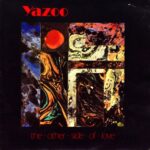




























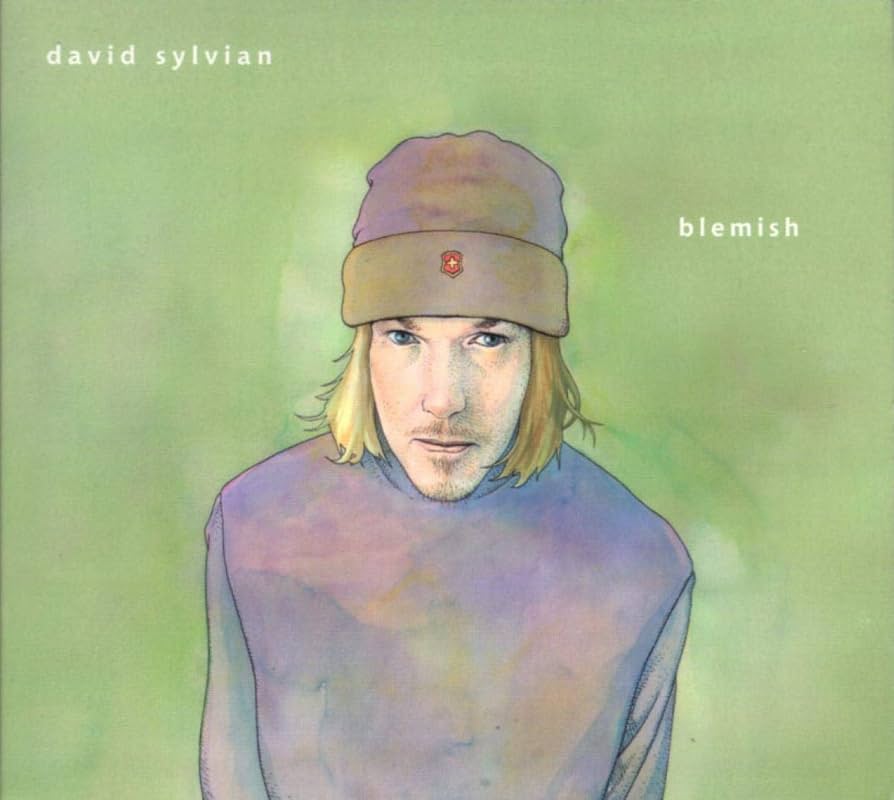







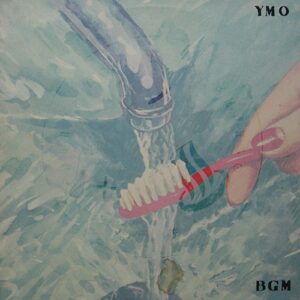


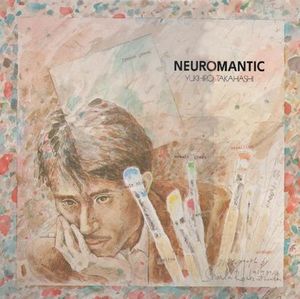











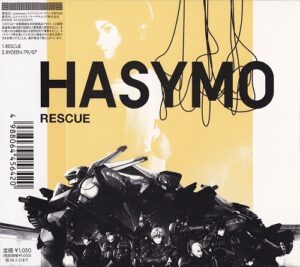









Follow Us!